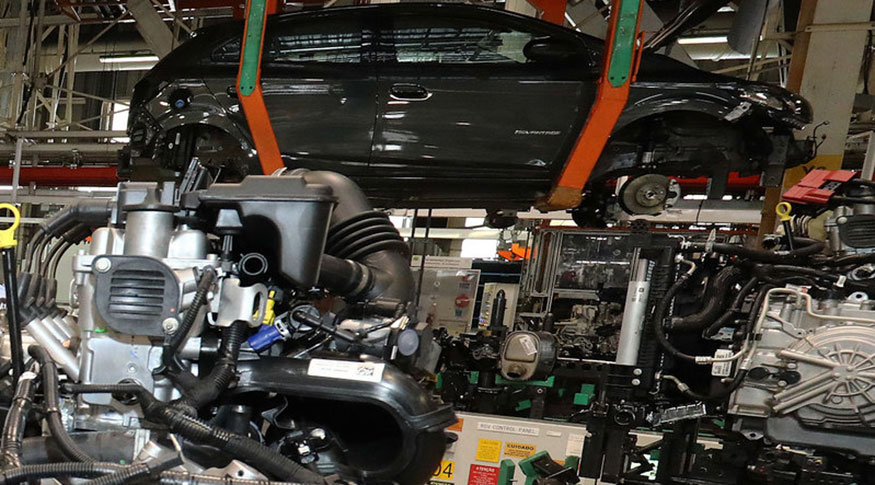Regional industry
Industrial output in São Paulo falls 23.2% in April, biggest drop since 2002
June 09, 2020 09h00 AM | Last Updated: June 09, 2020 03h40 PM

The industrial output in São Paulo retreated 23.2% in April, the biggest drop since the beginning of the time series of the Regional Monthly Industrial Survey in January 2002. The data released today (9) by the IBGE reflect the effects of social distancing to control the Covid-19 pandemic in a number of productive units in Brazil.
With the downtime of several production units, the survey pointed out a drop in 13 out of the 15 places surveyed between March and April, as well as a reduction of 18.8% in Brazil. Eight of those places hit the most intense negative result in the time series: Amazonas (-46.5%), Ceará (-33.9%), the Northeast Region (-29.0%), Paraná (-28.7%), Bahia (-24.7%), São Paulo (-23.2%), Rio Grande do Sul (-21.0%) and Rio de Janeiro (-13.9%).
As the largest industrial park in Brazil, São Paulo was the main negative highlight this month, as its production declined 23.2% over March. "São Paulo concentrates nearly 34% of the national industry and hits the most intense rate in the time series between March and April. The sectors that mostly influenced that drop were motor vehicles and machinery and equipment", explains Bernardo Almeida, an analyst of the survey. That was the third consecutive month of drop in the industrial output in São Paulo, accruing -27.9% in the period.
Having fallen 28.7% and accrued -32.3% in two months, Paraná was the second biggest influence on the national result. Like São Paulo, the sectors of motor vehicles and machinery and equipment were those that mostly contributed to the biggest retreat in the time series in that state. Rio de Janeiro, the third biggest negative highlight, accrued a loss of 15.6% in three months, influenced by the drops in the sectors of motor vehicles and petroleum products.
The sector of Other transportation equipment pressed the result in Amazonas, which accrued a drop of 53.2% in three months. "Whenever we talk about Amazonas, one can imply a drop in the production of motorcycles, the major product in this sector. Another sector that is also very influential in the Amazonas industry is that of computer equipment, electronic and optical products", explains Almeida.
Other drops were registered in Espírito Santo (-16.7%), Minas Gerais (-15.9%), Santa Catarina (-14.1%), Pernambuco (-11.7%) and Mato Grosso (-4.3%).
Bernardo Almeida highlights that the effects were not fully felt in March, as social distancing began just in the second half of that month. "When we arrived in April, we could see that the drop was quite impacting and significant. In national terms, we are in the worst level in the time series," states him.
After falling in March, industrial output of Pará and Goiás grows once again
Pará and Goiás were the only places that recorded positive indexes between March and April. Pará was the major positive influence on the national result, growing 4.9% after a negative result of -14.4% in the previous month. "The growth this month can be attributed to an increase in the mining sector, which did not fully reduce the production capacity and accounts for 88% of the Pará´s industry. The food sector is another sector that could have influenced positively", analyzes Almeida.
Goiás increased 2.3% in April, after a retreat of 2.5% in March. "That growth can also be attributed to the food and pharmaceutical sectors. Reminding that those two sectors go in the opposite way of the national industry. They are sectors that produce items considered essential in the pandemic," completes him.
Industry falls in 13 places compared with April 2019
Thirteen out of the 15 places surveyed also dropped compared with April 2019. In that comparison, nine out of the 15 places hit their most intense negative result since the beginning of the time series: Amazonas (-53.9%), Ceará (-53.0%), Rio Grande do Sul (-35.8%), the Northeast Region (-33.1%), São Paulo (-31.7%), Santa Catarina (-30.8%), Paraná (-30.6%), Pernambuco (-29.1%) and Bahia (-26.5%).
Espírito Santo (-23.9%), Minas Gerais (-20.4%), Mato Grosso (-11.6%) and Rio de Janeiro (-5.4%) were the other places with negative indexes. Also in that comparison, Pará (37.6%) and Goiás (0.4%) were the only ones with positive figures.



















